The Aboriginal people who inhabited the north-central area of British Columbia called themselves 'Uda ukelh' which means "People who travel by boat on water early in the morning." They are more commonly known as the Carrier. This is an English translation of the name applied to them by the neighboring Sekani people. The first European to encounter this Native group was Alexander Mackenzie, who traversed their territory en route to the Pacific in 1793. He first learned about them from the Sekani, and employed the term Carrier in his writings. (A more extensive history of the Dakelh/Carrier people can be found on the Footprints in Stone website, developed with the assistance of the Southern Carrier Nations.)
In 1808 Simon Fraser and his voyageurs explored what is now known as the Fraser River. They were serching for a navigable route to the Pacific Ocean, on behalf of the North West Company, a fur trading enterprise based in Montreal. The upper reaches of the river were known from Mackenzie's travels and it was mistakenly thought that these were the headwaters of the Columbia River. Although the Fraser proved far too hazardous for a safe trade route , the expedition did establish trade relations with numerous First Nations and led to the development of a system of fur trade posts in the territory west of the Rockies. Fraser named the first major tributary that they discovered along the river for Jules Maurice Quesnel, his clerk. The community that eventually grew up at the intersection of the Quesnel and Fraser Rivers was initally called Quesnelmouth . The name was shortened to Quesnel in 1898. (For more information explore the River of Memory website).
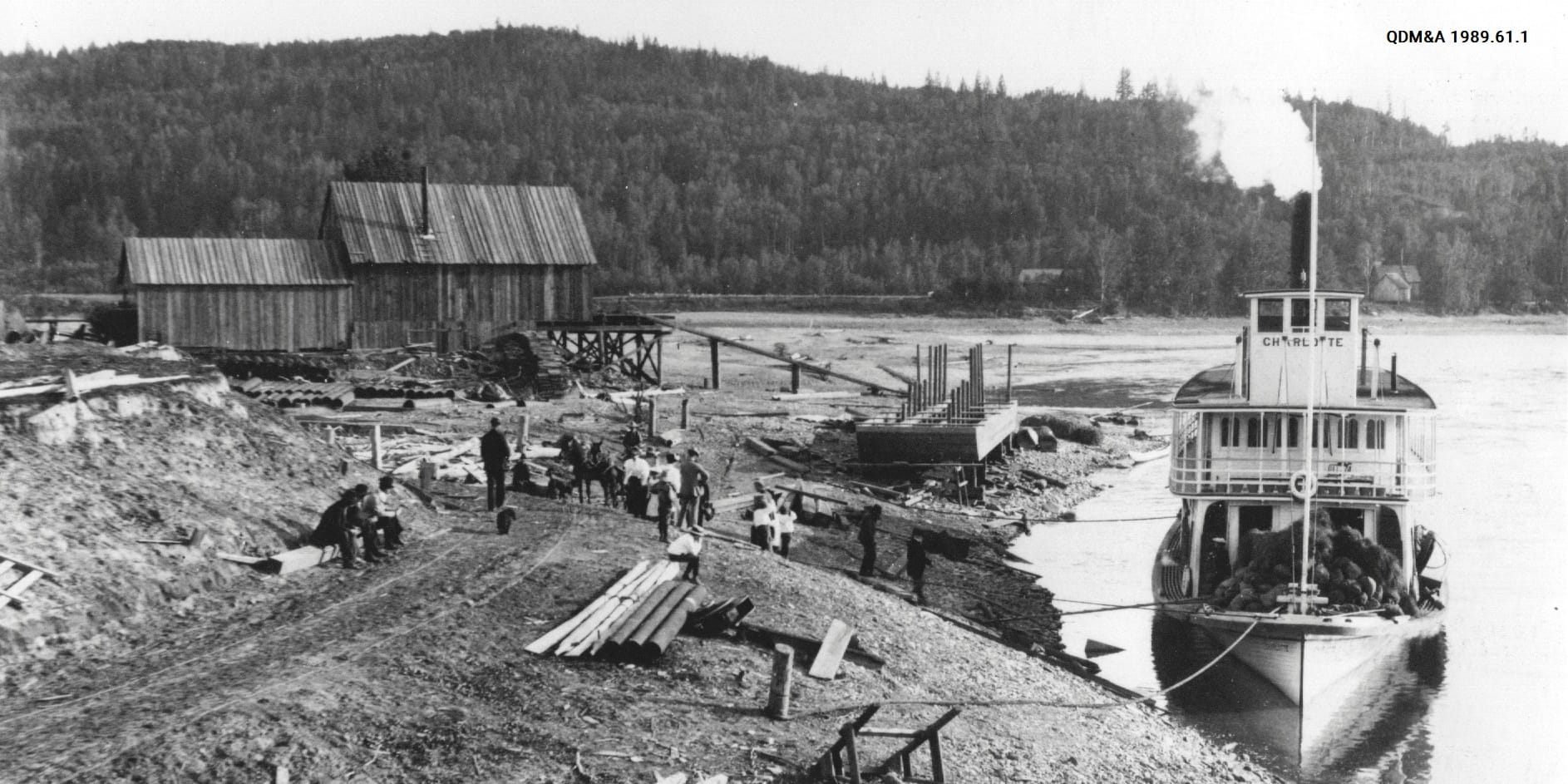
The discovery of gold on the Fraser River in the spring of 1857 initiated a Gold Rush with prospectors flooding up the river, staking claims. By 1859 they had reached the Quesnel River. Major strikes on Williams Creek in 1861 triggered the Cariboo Gold Rush and the growth of Barkerville. At its peak this boom town was said to have been the most populous city west of Chicago and north of San Francisco. The colonial government began the construction of the Cariboo Wagon Road in 1861 to provide a safer and less costly route for those transporting supplies to the gold mining settlements. Initially the road ran from Lillooet to Soda Creek. Here goods and passengers could transfer to sternwheelers which traveled as far as Quesnel. Eventually the road was extended through Quesnel to Barkerville. Due to its location Quesnel became a major stopover and supply center for the gold fields. A town survey was completed in 1863 and the number of businesses and residents increased. (For more information on the Gold Rush Trail)
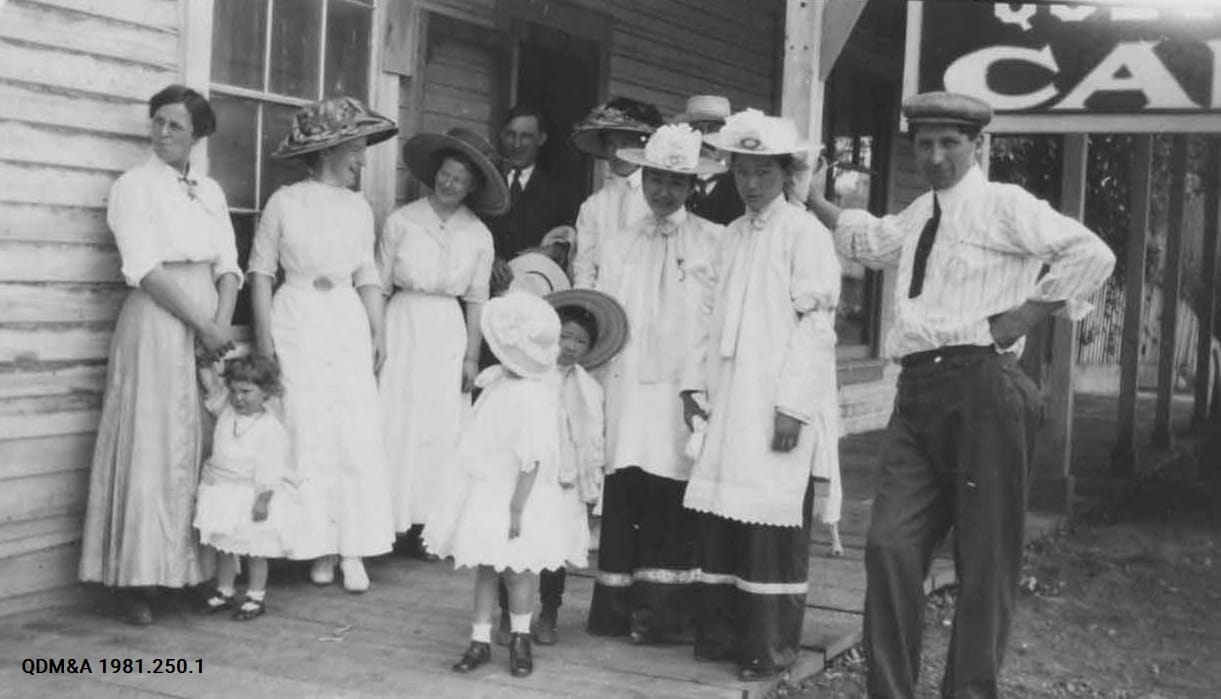
From its inception Quesnel was a multicultural community. Although the First Nations population was severely depleted by the small pox and measles epidemics of the 1860s, they continued their traditional practices of traveling through their territory hunting, and harvesting resources in a seasonal round. Important fishing camps are located near Quesnel. They also came to town to trade and to participate in community celebrations. As early as 1860, Chinese miners were working the bars at the mouth of the Quesnel River. Many soon turned to business- operating stores, providing services or raising meat and vegetables. The rest of Quesnel's population came from Eastern Canada, the United States and many countries in Europe. Although the population was fairly transient, the size of the community remained relatively stable into the twentieth century and the population was fairly equally divided between residents of Chinese and European descent.
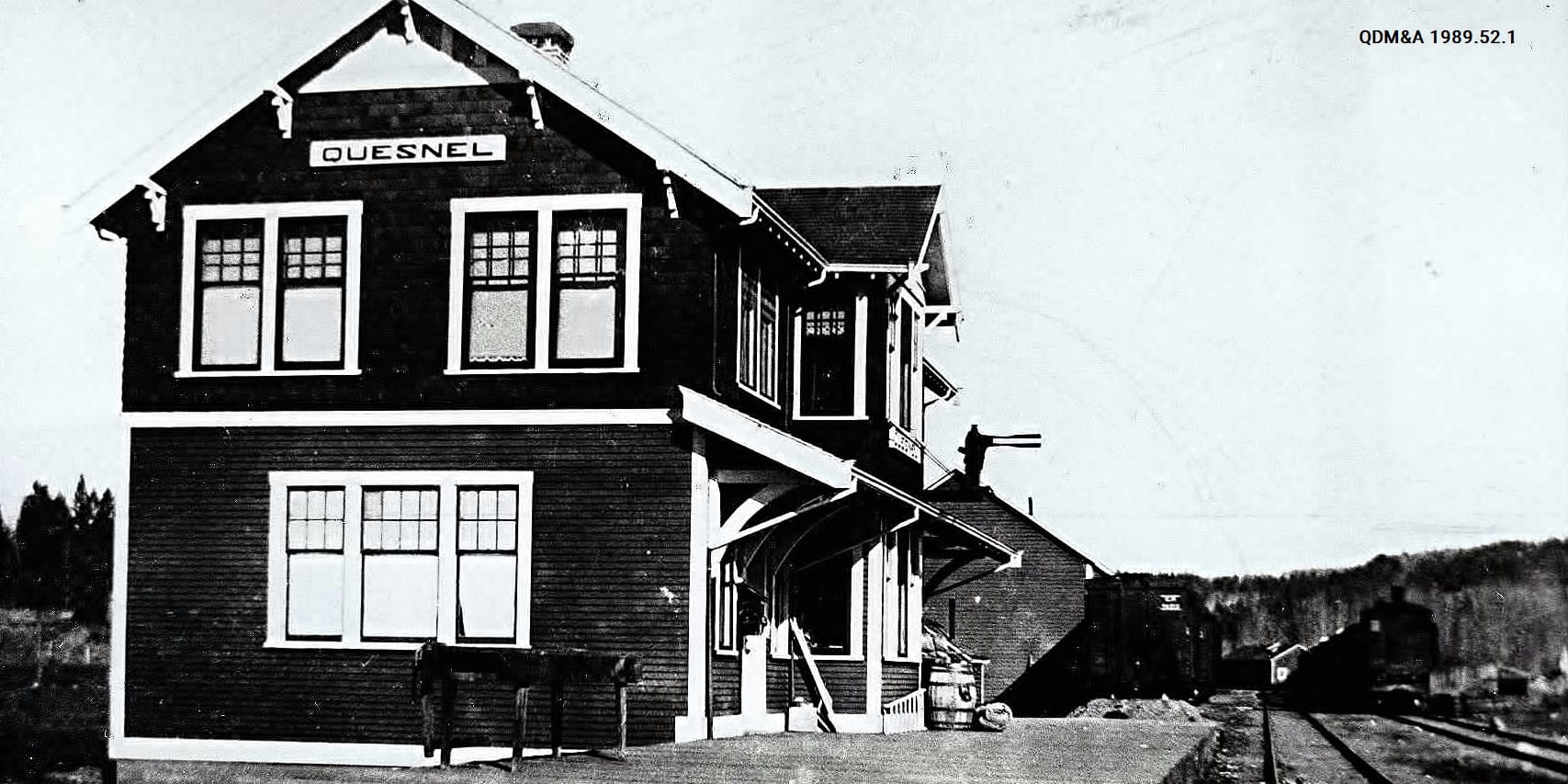
In 1865 the Collins Overland Telegraph reached Quesnel. This was an attempt to construct a line from California to Moscow to provide telegraph communication between North America and Europe, crossing the Bering Strait. The project was abandoned in 1866 when a cable was successfully laid across the Atlantic, but the line south of Quesnel was maintained, providing an important communication link. The telegraph trail, north of Quesnel remained an important route and, as a result, Quesnel continued to play a role as a supply centre for northern exploration, resource extraction and settlement. This was amplified by the construction of the Pacific Great Eastern Railway which reached Quesnel in 1921. Due to difficulties bridging the Cottonwood River, Quesnel remained the Northern terminus until 1952, when the line was connected to Prince George and the Canadian National Railway. During the early 1930s, when much of the world was experiencing an economic depression, Quesnel continued to prosper as a supply centre with the opening of the Cariboo Gold Quartz Mine in Wells. The second Cariboo Gold Rush continued until the late 1950s, with the Cariboo Gold Quartz Mine closing down completely in 1967.
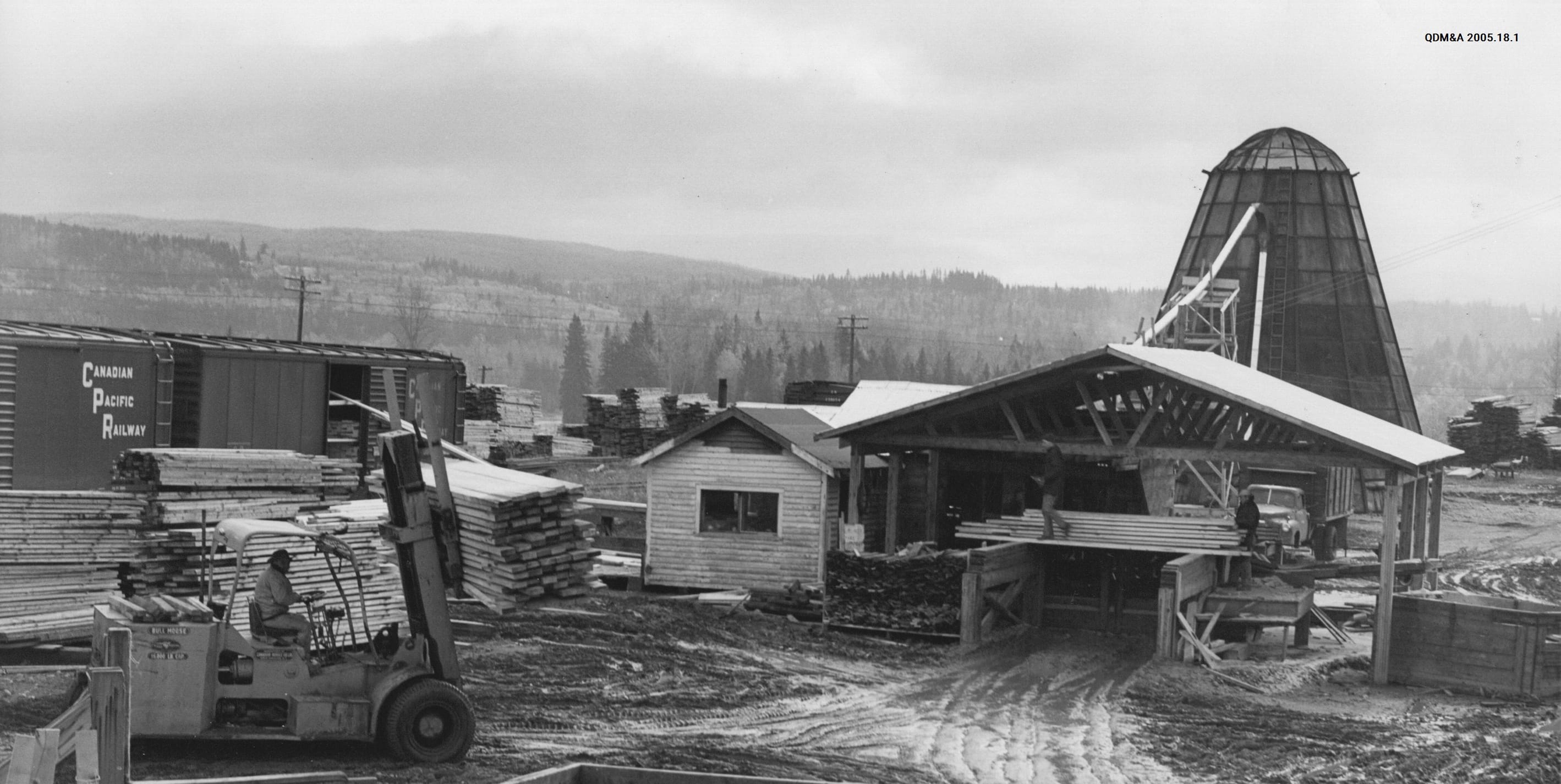
Although the timber industry had always been a part of the economy, it had largely been for local use: building construction, firewood and, during the construction of the PGE, railway ties. During WWII birch was harvested to manufacture plywood to build the Mosquito Bomber. A 1942 article reported that the Pacific Veneer Company of Burnaby was the largest manufacturer of airplane veneer in the British Empire and half of their birch supply was shipped from Quesnel. In 1945 there was a boom as buyers came to town to purchase pit props for the coal mines in Wales. The forest industry expanded rapidly with improved transportation, growing markets in the United States and the development of pulp and plywood products. In 1948 there were 33 registered sawmills within a 30 mile radius of Quesnel. By 1952 there were 180, plus 5 planer mills. As the decade progressed the number of mills declined as operations were consolidated into larger companies.
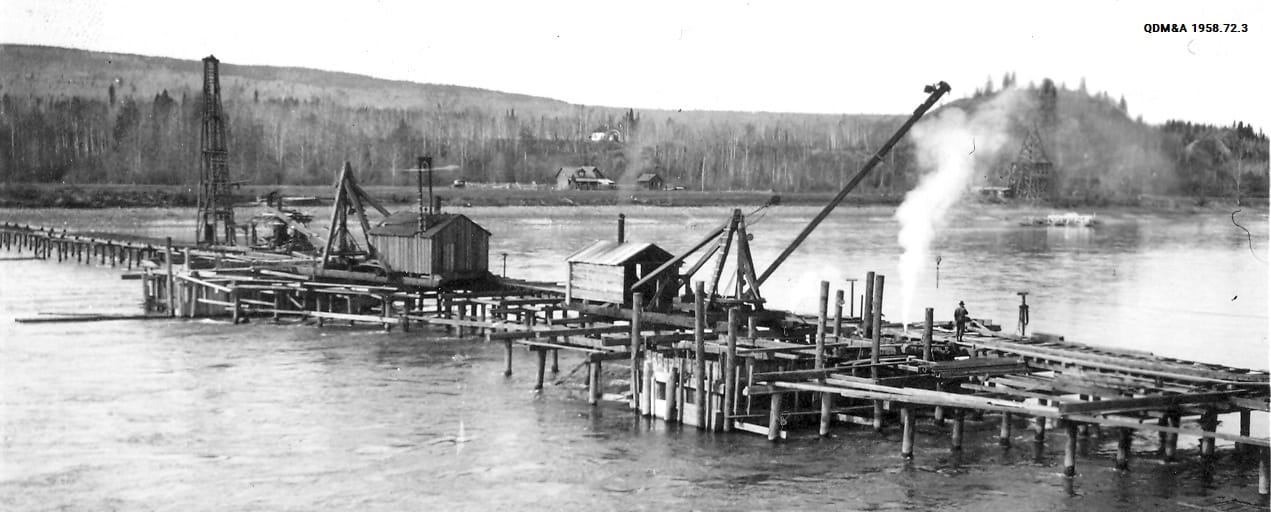
A bridge spanning the Fraser River was constructed in 1929. This resulted in the growth of the community on the west bank of the river. The village of Quesnel and West Quesnel amalgamated in 1955 and achieved town status in 1958. The municipality gained greater powers to borrow and finance local infrastructure projects, including paved streets and electric street lights, a new water system, a municipal hall and arena. Provincial initiatives included a natural gas line, consolidated high schools with improved facilities and the G.R. Baker Memorial Hospital.
The growth of the mills attracted a new immigrant population, primarily from India. By 1973 the Indo-Canadian community was large enough to construct a Sikh temple. They invested in property, came to play a significant role in the hospitality industry and enriched Quesnel's cultural life.
The community continued to grow and in 1979 became a City. Today, forestry continues to be the leading industry while agriculture, mining, and tourism are also important parts of Quesnel’s economy.
